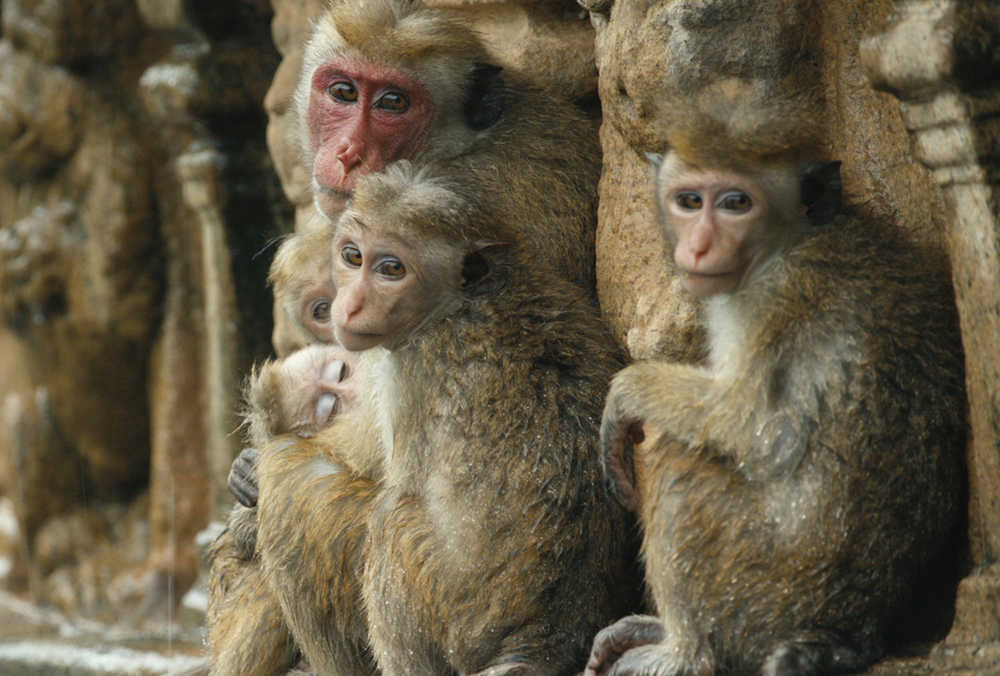“Monkey Kingdom”
Disney
1 hour, 21 minutes
You really have to hand it to Walt Disney. Despite being a massive corporate monolith, their Disneynature series continues to promote both environmental education and champion environmental and positive social causes throughout the world. Or at least that’s what the introductory video to this week’s “Monkey Kingdom” says. I don’t really know how effective or serious Disney is about the causes they endorse, but at the very least, the Nature series can at least serve to whet kids’ interest for real science once they get older.
Disney’s hook in these nature films is that instead of a straightforward documentary, they are telling a story with a narrative arc, replete with heroes and villains. The heroine of “Monkey Kingdom” is Mya, an ordinary, run of the mill macaque monkey living at the bottom of the social ladder in what is known as “the Temple Troop,” so-named for the ancient ruined city where the monkeys make their home. Macaque monkeys live in small groups, numbering a few dozen members, and those groups are strictly hierarchical. The leaders of the troop, Raja and his wives, The Sisters, live at the top, enjoying the choicest fruit and receiving all the grooming a monkey could ask for. Monkeys at the bottom, like Mya, tend to take what they can get, and are treated more like servants. But Mya’s situation isn’t completely hopeless. Much like in nearly any Disney film, an ambitious and handsome young prince from a rival kingdom has arrived and taken a shine to Mya. Kumar and his lady love could go all the way to the top, but soon the future of the entire troop is in jeopardy. The ruthless and hideously scarred Lex has appeared with a macaque army at his back to challenge Raja and the Temple Troop for the right to live in these hallowed halls.
“Monkey Kingdom” is certainly rich with beautiful photography, and I did learn a lot about macaque monkeys that I didn’t know. But this gets to the heart of the problem with the movie and with Disneynature’s approach to these films as a whole. I don’t really know if I learned much that was accurate. Aside from interesting information you can get from direct observation — such as the fact that macaque monkeys eat the root ball of water lilies and will dive deep to get them, or that the monkeys enjoy gorging on flying termites, there isn’t really any usable science on display here. The “scholarship” of this product is largely non-existent, given over to an anthropomorphic tale of strife, struggle, and triumph. I realize this isn’t the BBC and that these films are directed more at children, but even the most casual viewers of standard nature documentaries will begin to feel they are being duped. This comes into sharp focus during an episode where Mya, starving, leads a cadre of lower class monkeys into the nearby town to raid a children’s birthday party that has been left unattended. For my five and seven year olds, this is a funny scene, with monkeys wreaking havoc on the party decorations and ending with a crazy dismantling of the birthday cake. But for me, all I could think was, “this is a set-up.” Every one of these interior shots is expertly staged, lit, and captured, and unless an entire camera crew just broke into someone’s house, dispassionately following their monkey subjects, and then watched as the monkeys trashed the place, then I am watching animal actors instead of animals in the wild. After this, I began to question everything the movie had posited. What else in the film is a set-up? Do macaque monkeys really live in strict hierarchical groupings? Is the monkey they name Mya really at the bottom of the ladder? Is Mya even always the same monkey? And does it matter?
On the one hand, no. The story is interesting, gripping at times, funny at others, and ultimately adequately entertaining. As I said, my kids enjoyed the movie and the next time they see a macaque monkey in a book or on TV, I bet they’ll remember the name and one or two facts about them. But on the other hand, Disneynature is setting themselves up to be the ecological education arm of Walt Disney, and real science is implied. As an adult viewer, I now trust very little of the information I was given about macaques and that doesn’t do much for the reputation of their ecological education.
Another problem is that “Monkey Kingdom” makes absolutely no effort to place its subjects in any kind of larger global context. I think they may have mentioned Sri Lanka briefly at the beginning of the film, but then again I might have gotten that off the macaque Wikipedia page. The amazing ancient city that provides the setting of “Monkey Kingdom” is never named nor is any information, even cursory, offered about it. (It’s called Polonnaruwa and dates back to 1070 – again, Wikipedia.) There are almost no human beings in the movie, which would be fine except that another tidbit I read is that Polonnaruwa is an active tourist destination where people go specifically to see the macaque monkeys. So it would stand to reason that these monkeys live in at least some kind of proximity to humans, making that part of their story.
None of this really impacts the tale “Monkey Kingdom” is trying to tell, but rather the way Disneynature chooses to tell it. They offer a pretty picture, but I’d like something more than just the same old Disney fairy tale set to monkeys.
Grade: C+
“Monkey Kingdom” is rated G.
Chris Jenness is a freelance graphic designer, artist and movie buff who lives in Nikiski.

